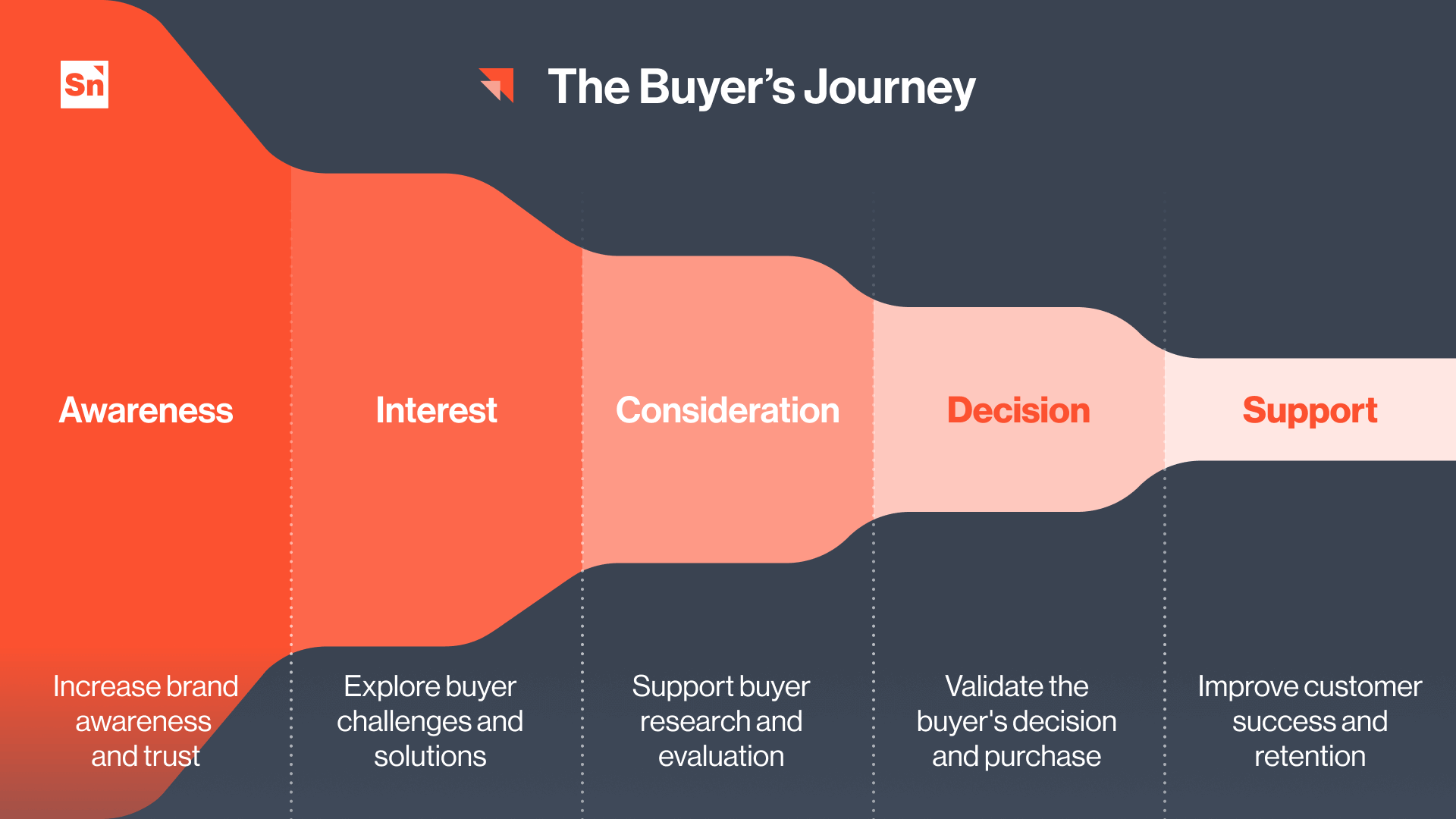Your video marketing strategy is just like any other marketing strategy. It’s important to kick off your initiatives successfully and see the process through. Also important is taking a moment to see how video content performs before running off to your next campaign.
As your strategy, customer engagement, and technological capabilities evolve, taking an analytical approach helps you continually maximize your video marketing investment.
There’s a lot to look at with video metrics, so how do you know where to look? Your video KPIs as a strategic marketer are going to differ vastly from those of a content creator. You’ll want to focus most of your energy on video metrics that relate to tangible business results.
Why Tracking Video Marketing Analytics Matters
Video marketing analytics provide valuable insights into your campaigns. If you don’t track your metrics for your marketing videos, you won’t be able to make informed decisions or make necessary changes to improve campaign performance.
But if you stay on top of your video metrics, you’ll be able to:
Improve Engagement by Replicating Successful Videos
With video marketing, you have to take the good with the bad. Some videos will sparkle and others will fade into the darkness, but there is something to learn from your underperformers and your high performers.
Video Underperformers
For video underperformers, determine where viewers lose interest or disengage by analyzing metrics such as view duration, drop-off points, click-through rates, and engagement rates. Whether it’s the content, messaging, visuals, or CTAs, you’ll know which elements need improvement for ongoing video marketing efforts.
Video High Performers
For video high performers, seeing which videos generate the most engagement, conversions, or positive feedback helps you understand how to replicate successful elements in future videos.
Digging into these video metrics says a lot about your audience’s preferences, so you can consistently create targeted and personalized video content that inspires them to take action.
Understand How Video Influences the Buyer’s Journey
Video marketing analytics help you gain a better understanding of the buyer’s journey and how videos influence it. You’ll track how videos contribute to lead generation, conversion, and customer retention at various stages of the marketing funnel.

This unbeatable data allows you to optimize video distribution, timing, and messaging to align with the different stages of the buyer’s journey. This heightened level of empathy for your buyer will only enhance the performance of your video marketing campaigns.
Measure ROI and Justify Video Marketing Budgets
Video is the most engaging content, but it’s also the most expensive to produce. By analyzing video KPIs like engagement rates, conversion rates, and customer acquisition costs, you’ll figure out the ROI of your video marketing efforts.
Once you have data that shows the effectiveness of your video campaigns, you’ll be able to justify your spending decisions by demonstrating a positive impact on organizational growth.
The Top 3 Video Marketing Metrics to Track
Obviously, vanity metrics like total views aren’t going to be your sole focus. To ensure your video marketing efforts are focused on tangible business results, here are the video metrics to prioritize so you gain actionable insights that improve decision-making.
Conversions
The ultimate goal of your video marketing strategy is to get your audience to take the next step with your organization, whether that’s subscribing to an email list, signing up for a webinar, or requesting a demo.
You want to track how effectively your videos were able to motivate this action by tracking conversion rates. To do this, ensure you have a clear and strong CTA in any copy associated with your video (YouTube descriptions, social media posts, etc.).
You’re likely distributing this content across several channels, so taking advantage of UTMs will give you an extra layer of insight into which videos on which channels perform well…and which fall short.
Click-Through Rate (CTR)
Not every viewer is going to be ready to convert, so it’s important to track lower-commitment engagements like clicks as well. When people click, it’s an indicator that your content is interesting to them. This helps you decide which topics or formats to explore in the future.
When you pair this metric with conversions, you can dig even deeper into strategic insights.
If a video that you distribute via email has a strong CTR but the landing page has low conversion rates, that gives you an idea of where to focus your efforts. Either the landing page copy needs to be tweaked or there’s a disconnect between the video content and the conversion you’re hoping they make.
Engagement and Watch Time
Both of these behavioral metrics may not be as directly traceable to results in the way that conversions and click-through rates are, but they’re valuable to track nonetheless. Especially when it comes to videos that are for brand-building purposes.
Engagement metrics include shares, comments, saves, and reactions. Many of these video metrics are trackable on social media channels and YouTube. For watch time, you should look at both total watch time (i.e. 5m 30s) and watch percentage (i.e. 60% video completion).
All of these results help you understand what gets your audience jazzed up. These metrics leave wonderful clues about videos you should explore in the future or ideas for lead generators that you need to create as a follow-up to get them to take that next step.
Acting on Your Video Marketing KPIs
So what do you do after you collect all of these golden video metrics?
When you experience an immediate boost in metrics like conversions or engagement, you have full permission to be proud of this moment. With more moments like these, you’ll be able to prove the value of your video marketing investment.
This tangible progress opens the door to bigger video budgets that allow you to scale your marketing campaigns. And, if all goes well, you’ll take even bigger strides toward achieving your growth marketing objectives.
Sadly, there will be videos that flop. Digging into these metrics can help you identify which types of videos (length, content, format) perform well and which don’t. Continually use the insights you glean here to perfect your strategy.
For both high and low performers, one obvious and critical consideration here is that videos will not yield results if you just publish one.
To see success with video, commit to the ongoing publishing of consistent, quality content—whether that’s once a week, more or less. Then, you can track all of these video metrics over time to understand insights, trends, and patterns.
Regularly analyzing and monitoring these metrics will enable you to optimize your video marketing strategy, make stronger data-driven decisions, and constantly improve the effectiveness of your campaigns.

